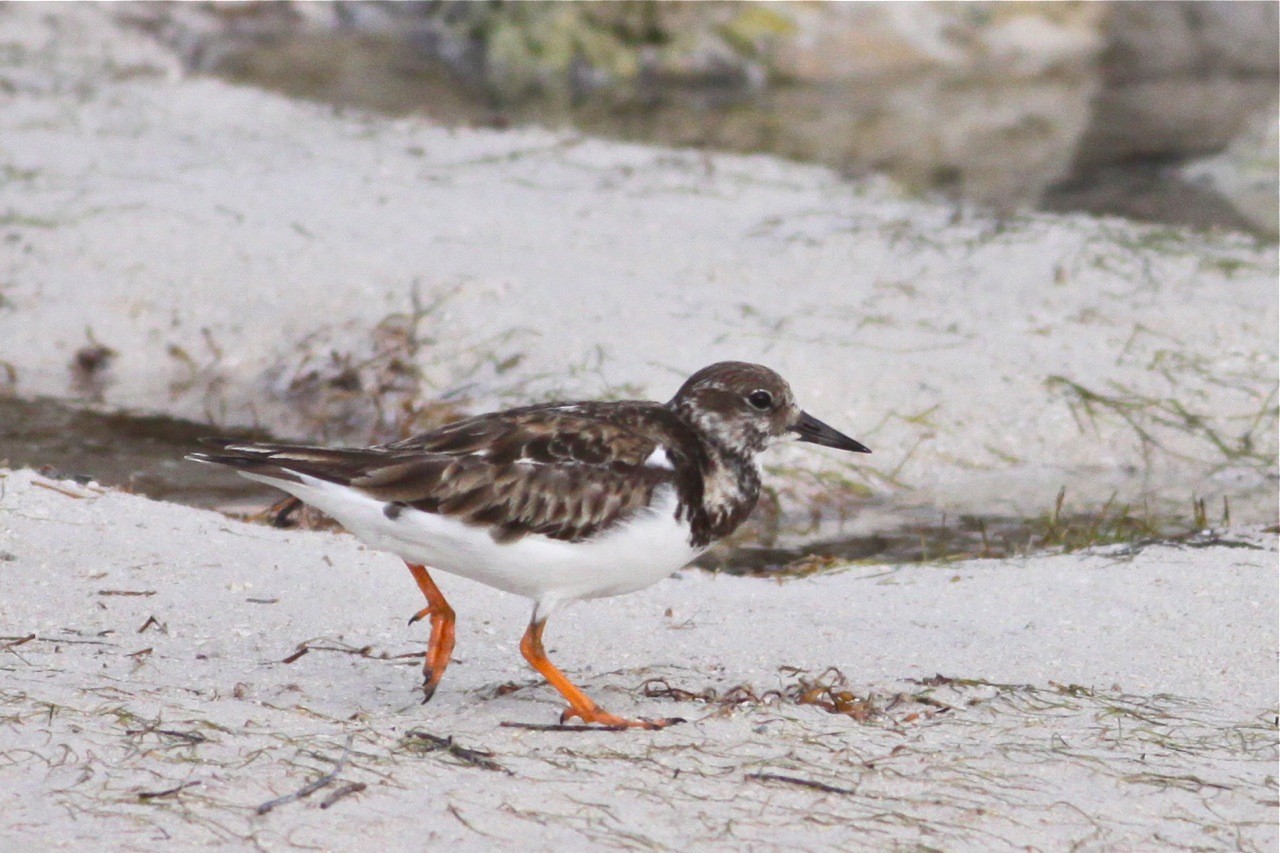Ruddy Turnstone
A species of Turnstones, Also known as Calico-back Scientific name : Arenaria interpres Genus : Turnstones
Ruddy Turnstone, A species of Turnstones
Also known as:
Calico-back
Botanical name: Arenaria interpres
Genus: Turnstones
Content
Description People often ask General Info
Description
A small shorebird, the ruddy Turnstone has a unique foraging method. The bird uses its short beak to flip over shells, rocks, and other debris as it searches for invertebrates. It is a common bird on coastlines throughout the world but prefers rocky shorelines. It’s not uncommon for it to mix with other types of shorebirds, but its rattling cry makes it easily identifiable.
Size
22 - 24 cm
Life Expectancy
10 years
Nest Placement
Ground
Clutch Size
2 - 5 eggs
Number of Broods
21 - 24 days
Feeding Habits
Ruddy Turnstone predominantly consumes insects, specifically flies and midges, during breeding. Utilizing their unique bills, they overturn objects to uncover prey. Their diet broadens off-season to include crustaceans, mollusks, eggs, carrion, and plant material, often foraging in flocks.
Habitat
Ruddy Turnstone predominantly reside in coastal zones, their geographical distribution varying with seasons. In breeding months, they favor High Arctic tundra habitats near water sources like marshes and ponds with sparse vegetation. Outside the breeding season, ruddy Turnstone frequent a wider range of coastal environments such as rocky and sandy beaches, mudflats, and lake shorelines for resting and foraging. These birds adapt to diverse climates, from temperate to tropic regions, and are common visitors to estuaries and deltas during migration.
Nest Behavior
During the mating season, both male and female ruddy Turnstone participate in making scrapes within the male's territory. The female selects the nesting site and prepares the scrape, shaping it using her body. Afterward, she lines the nest with nearby vegetation.
Nest Characteristics
Ruddy Turnstone's nest is a shallow ground scrape, often located at the edge of tundra vegetation near wet areas, protected from the wind, or occasionally on bare gravel/sand. The depression is lined with pieces of local vegetation like lichens or willows.
Dite type
Aquatic invertebrate eater
People often ask
General Info
Feeding Habits
Bird food type
Sounds
Call
Recording location: Japan
Call
Recording location: Netherlands
Behavior
Ruddy Turnstone exhibit industrious foraging behaviors, frequently turning over debris with their robust bills to uncover prey. These monogamous, territorial birds demonstrate distinctive courtship rituals, including elaborate displays and calls. They're vigilant parents; males guard and females incubate eggs, both taking protective actions against predators. Post-hatching, territories dissolve, prioritizing chick access to food-rich areas. Their migratory patterns are phased, with unsuccessful breeders leaving first, followed by females, males, and juveniles. In transit, they form large flocks, coordinating movement and feeding along various coastal habitats.
Distribution Area
The ruddy turnstone breeds in northern latitudes, usually no more than a few kilometres from the sea. The subspecies A. i. morinella occurs in northern Alaska and in Arctic Canada as far east as Baffin Island. It formerly bred on the Baltic coast of Germany and has possibly bred in Scotland and the Faroe Islands. In the Americas, the species winters on coastlines from Washington and Massachusetts southwards to the southern tip of South America although it is scarce in southern parts of Chile and Argentina and is only an unconfirmed vagrant in the Falkland Islands. 
Species Status
According to the International Union for Conservation of Nature (IUCN), the ruddy turnstone population is currently very stable. Environment Canada surveys suggest that they have in fact decreased in abundance relative to the 1970s, and face a variety of threats during migration and winter. 
Scientific Classification
Phylum
Chordates Class
Birds Order
Shorebirds Family
Sandpipers Genus
Turnstones Species
Ruddy Turnstone 